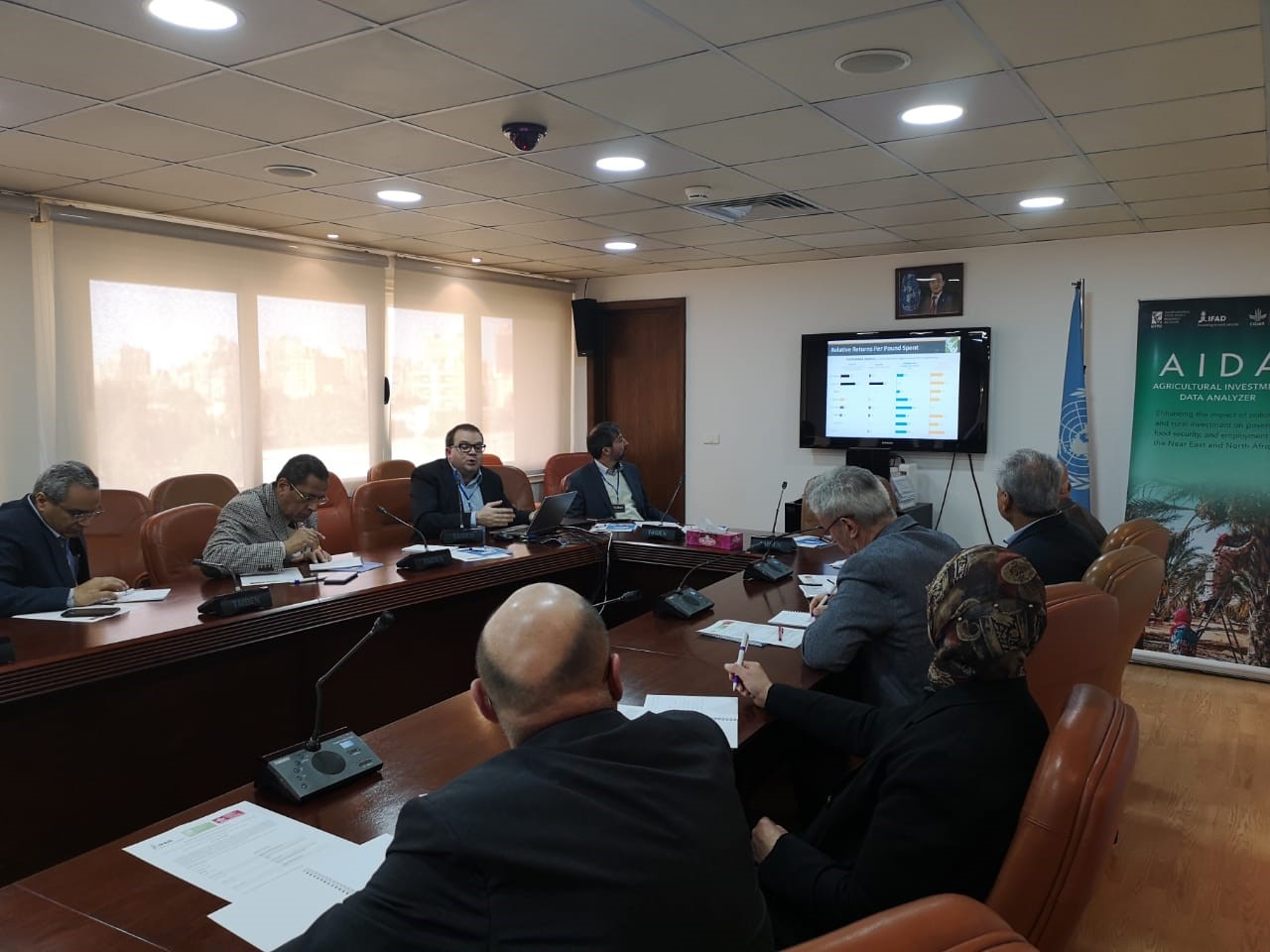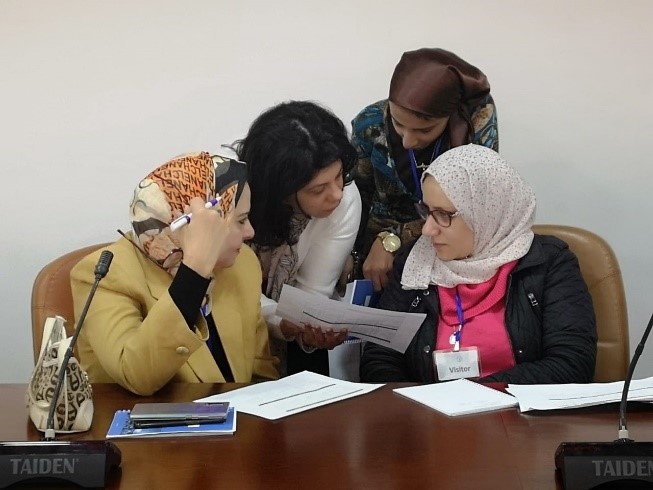Mariam Raouf
January 30, 2020
The Ministry of Agriculture and Land Reclamation with support from FAO are currently revising the National Agricultural Strategy. In order to provide technical support for the development of the related investment plan, IFPRI has presented the Agricultural Investment Data Analyzer (AIDA) during a meeting with the agricultural strategy group on October 23rd, 2019. ADIA is an evidence-based tool that uses the economy-wide Computable General Equilibrium (CGE) Modeling to help in the investment priority setting. Based on the outcomes of this meeting, IFPRI has developed 10 Egypt-specific priority investment cases within AIDA. These 10 investment cases include: farmer extension services; subsidized inputs; developing new crop varieties (crop R&D); genetic engineering livestock (live R&D); agro-industries promotion; horticulture exports; controlled environmental greenhouses; marketing cooperatives and reducing food losses. A follow-up meeting was held on January 30th, 2020, during which, IFPRI team presented the results of running the CGE simulations for these 10 investment cases. The objective was to set agri-food system investment priorities based on around 30 expert opinions and the interactive use of AIDA during the meeting.

Setting investment priorities: Presentation of AIDA and Egypt investment analysis, January 30th, 2020. Photo taken by Yumna Kassim.
In his presentation, James Thurlow, Senior Research Fellow at IFPRI, described the AIDA modelling toolkit that combines CGE modelling with investment planning tools. AIDA tool builds on the Social Accounting Matrix (SAM), that was constructed for Egypt in collaboration with the Central Agency for Public Mobilization and Statistics (CAPMAS). AIDA also includes an investment component that aims to estimate the unit cost of each type of investment, the coverage rate, in addition to the expected productivity gains.
This innovative tool turns the investment spending into economic outcomes. The key feature of the model is that it goes beyond the farming and considers not only the agriculture transformation but also the whole of the agriculture value chain. It has also the advantage of capturing all the components of the agri-food system, starting from farmers who provide the input supplies, then linking to the markets through the activities of trade and transportation, and subsequently also ending with the agri-food processing activities which provide food services to final consumers in the domestic or export markets. The investment analysis component converts the investment spending into productivity gains by indicating the unit cost of each type of agricultural investment. For example, if the government decides to increase the amount of investment spending that is directed towards improving irrigation, then the cost of improving irrigation per hectare is calculated, followed by specifying the number of new feddans that will benefit from this intervention, and hence, the rate of coverage is estimated. This would indicate the portion of irrigated land that has been improved, and accordingly, the impact on the total productivity is obtained.
These investment parameters, named “handshake parameters”, were collected to derive the appropriate productivity shock for each sub-agricultural investment. The parameters include the coverage rate, the unit cost of the investment spending as well as the impact on the productivity gain that is induced by this investment spending.
A baseline scenario serves as a benchmark for comparing the results of different scenarios. After providing the model with the investment costs and productivity gains, the above mentioned 10 investment policy scenarios have been implemented using the AIDA offline model. The results were ranked in terms of four outcomes: reducing poverty, increasing growth, generating employment and improving nutrition. By giving equal weights for these four outcomes, the model has developed a composite score for ranking policies and investment, whereby investing in greenhouses generated the highest returns in terms of reducing poverty, increasing economic growth, providing more employment and achieving a better nutrient diet for households. However, by giving different weights to the outcomes, investing in agro-industries contributed the most in reducing poverty, whereas the investment in greenhouses appear to have achieved the highest return in terms of increasing GDP growth. Giving different weights to the different outcomes would influence the ranking of investment priorities.

Setting investment priorities: Interactive process of prioritizing investments using AIDA, January 30th, 2020. Photo taken by Yumna Kassim.
Participants were then highly engaged in an interactive discussion, during which they suggested to include additional target variables to the model such as food security and the impact of investment spending on the demand for scarce water resources. Subsequently, participants were split in 4 groups to discuss the above-mentioned investment policy options in the agricultural sector. They provided their feedback on the values of the handshake parameters, especially the indicators that were related to the coverage rate, the unit cost and the expected productivity gain of the investment spending in each type of sub-agricultural sector.
